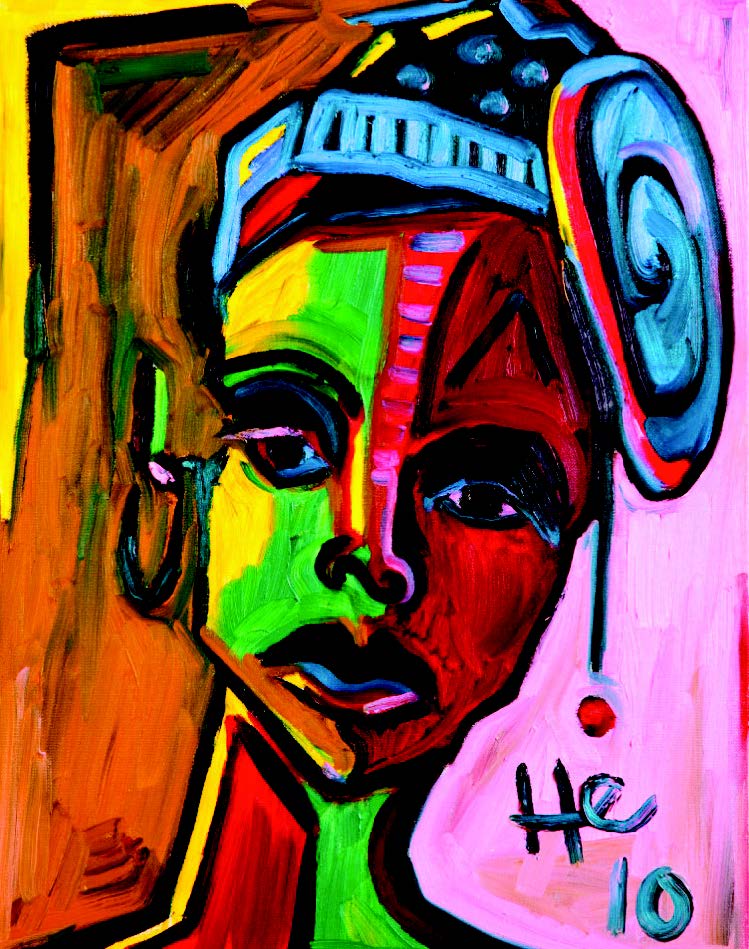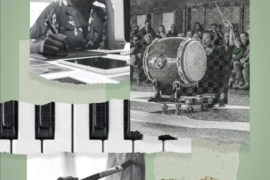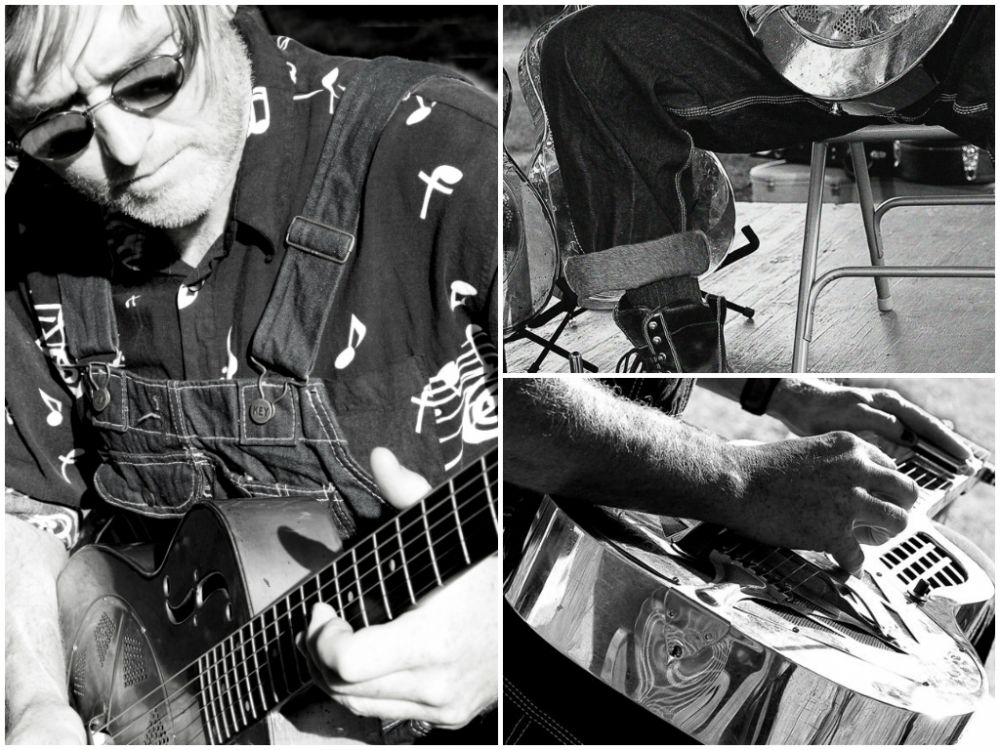written by Danielle Harris
Hans Magden’s paintings are an invitation into his mind.
“I usually go into a trance for twelve straight hours and then I’m done,” he says. The creative urge lasts long enough to produce an image, a facial expression, a memory, or a feeling on the square or rectangle before him. “I never know exactly what the meaning is, but it works itself out.” And it does. Painted across the canvases is the story of a man– the psychotic grappling with his personal life, the transition into trusting his subconscious, the struggle with accepting a diagnosis of Parkinson’s disease. Then there’s the complexity of portraying the moment simply.
Magden’s art used to compete with his veterinarian practice in Eastern Oregon. “I had a little studio next to the practice. If someone canceled, I’d sneak off and paint.” When he sold the practice in 1993, he started painting full time. Images from Magden’s family burst forth in his early paintings. “I started out painting my psychosis rather than paying for therapy,” Magden says. The uncomfortable sensations caused by these deeply personal revelations develop into admiration of the courage and honesty of the artist. “Ella Going Home” is a depiction from a boyhood memory of his 94-year-old grandmother running away. After overhearing the plans to commit her to a mental institution, she secretly packed all her possessions into a steel wheelbarrow and escaped into the night. The next morning, the family rounded her up about five miles away. Magden’s dad shows up in many of his early paintings. In “Bell,” his father’s looming head dominates the landscape wearing a tiny bell. And in “Marriage,” which was painted after the demise of Magden’s own marriage, the angry, twisting figures of a man and woman are locked back-toback by their arms. The face of his wrestler son with the resulting cauliflower-ear emerges from a four-legged animal in “After the Wars.” There’s even a portrayal of his traitorous dog, Joker, a painting that he eventually gave to the mail carrier.
After four years of painting full time, Magden got his veterinary practice back. He sold it a second time in 2006 and returned to painting. Instead of painting his psychosis, however, he mirrored the fight for dominance of his mind and body. He was in denial that his symptoms—tremors, rigidity, slowness of movement, and poor coordination—pointed to Parkinson’s disease, a degenerative nervous system disorder that impairs motor skills. His paintings chronicle the battle as he trained his left hand to paint by following his right hand. Then, he pared down his leaving much of the canvas unpainted. He focused only on the core of the painting, leaving out all unnecessary strokes—including his usual notation of the year at the bottom right corner.
For five years, Magden fought the symptoms and struggled to paint. “I resisted the diagnosis and put it off as long as possible,” Magden says. “I went to a sporting event. I walked up the bleachers but didn’t know if I could get back down. It was hot, but I didn’t want to take my coat off because I might not be able to get it back on.” He finally received the official diagnosis in 2010. “It hit me like a train wreck,” he says. Yet, Magden allowed everything he experienced to flow from his brushes. The difficult acceptance of the diagnosis was dutifully recorded on canvas, represented in the pain-filled face of “King Izzy.”
“The battle with Parkinson’s is mostly invisible,” he says. “What people see is the tremors and the shakes. What people don’t see is that it affects your mind.” Babies sleep all day because of the enormous brainwork required to do seemingly simple tasks—like learning to pick up a Cheerio from the table. Parkinson’s disease requires that the patient learn all these tasks again.
Magden has never shied away from challenges. He grew up boxing and wrestling, taking on all comers in the ring or on the mat. “I always enjoy the physical combat,” he says.
He draws on all that courage, training and experience now as he faces an invisible foe. “I force myself to retrain my brain,” Magden notes. “I have to retrain myself to brush my teeth, put my clothes on. But you don’t give up and you relearn all those pathways again, probably in a different part of your brain.”
After the acceptance, diagnosis and resulting medication, Magden’s condition has improved. He has put the color back into his paintings. The training of his left hand has proven useful, and he paints with both hands now. Though there is no cure for Parkinson’s disease, the one benefit that helps all patients is exercise. Magden is a faithful runner and he observes that he can run easier than he can walk. “Rhythms help,” he says. “With painting, I’ve discovered a rhythm and I can forget about Parkinson’s for awhile.”
Now, he has distanced himself from the emotional stigma of previous years. “I’m less attached to the inner turmoil,” he says. He gathers visions and emotions from experiences around him, portraying just a facial expression or recording a feeling. It’s more transient. “We can’t help but paint what’s in our environment,” Magden says. “I almost have to paint the faces and the eyes first. They usually are the intensity of the piece.”
These transient pieces seem to include the passing, momentary bits of the present. As he was painting “Fiddler,” he stepped outside of his John Day home for a break and almost stepped on a rattlesnake. That snake made its way into the painting, geometrically winding itself around the fiddler’s legs.
Magden works in a secluded room without windows and where the housekeeper is banned. Clips from magazines, pictures that inspire, and sketches are tacked and stapled haphazardly to the wall. As he adds to the collage, colors and faces that have caught the artist’s eye will eventually cover the surrounding walls. The studio arrangement represents a metaphorical fortress. “I try to keep people out of my art room so they don’t influence me,” he says.
Magden’s art debuted at the International Art Expo in New York in March.
To view his art, visit hans-magden.artistwebsites.com.









